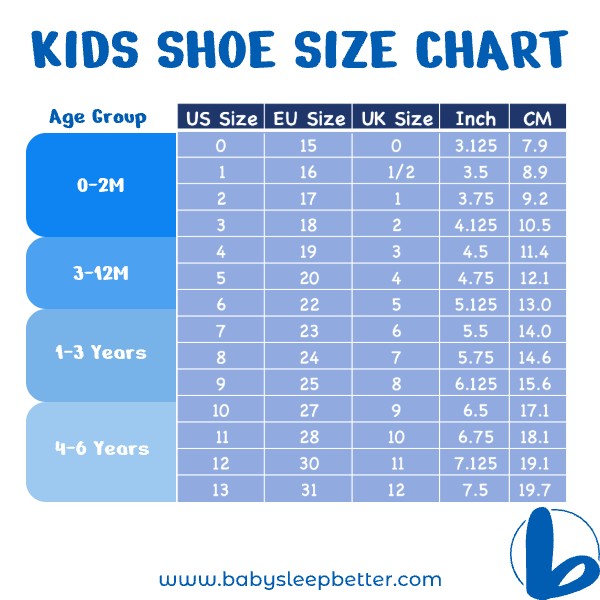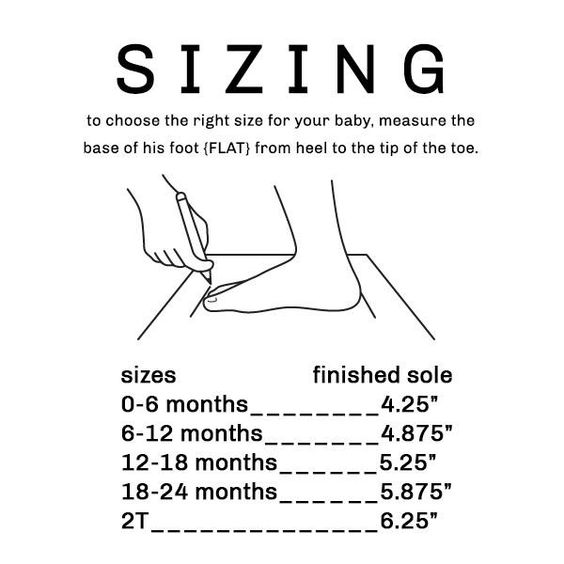To figure out toddler shoe size, measure their foot length in inches or centimeters. Use a size chart to find the corresponding shoe size.
Finding the right shoe size for your toddler is important. Comfortable shoes support their growing feet. Measure your child’s foot at home easily. Start by having them stand on a piece of paper. Mark the longest toe and the back of the heel.
Measure the distance in inches or centimeters. Use this measurement to check a shoe size chart. Remember, children’s feet grow quickly. Check their shoe size every few months to ensure a good fit. Choose shoes that allow some room for growth but are not too loose. Proper fitting shoes help your child walk and play comfortably.
Table of Contents
Introduction To Toddler Shoe Sizing
Finding the right shoe size for toddlers can be tricky. Toddlers grow quickly, making it hard to keep track of their shoe size. This guide helps you understand toddler shoe sizing. It covers why the correct size matters and the challenges parents face in measuring their little ones’ feet.
Why Correct Size Matters
Choosing the correct shoe size is vital for several reasons:
- Comfort: Properly fitted shoes keep little feet comfortable.
- Development: Shoes that fit well support healthy foot growth.
- Safety: The right size reduces the risk of tripping or falling.
- Confidence: Comfortable shoes help toddlers walk and play freely.
Parents should measure their toddler’s feet regularly. This ensures they wear shoes that fit well. Remember, toddlers grow rapidly. What fits today may not fit in a few weeks.
Challenges In Sizing For Toddlers
Measuring a toddler’s feet can be difficult. Here are some common challenges:
- Wiggly Feet: Toddlers often move around, making it hard to measure.
- Foot Shape: Feet come in different shapes. This affects sizing.
- Shoe Styles: Different brands may fit differently, even in the same size.
- Growth Spurts: Toddlers grow quickly. Sizes can change unexpectedly.
To overcome these challenges, try these tips:
- Use a foot measuring tool.
- Measure feet at the end of the day.
- Check both feet. One may be larger than the other.
- Always try shoes on before buying.
Measuring Feet At Home
Measuring your toddler’s feet at home is simple and effective. Accurate measurements ensure a perfect fit. This helps keep your child comfortable and happy. Follow these steps to measure their feet correctly.
Tools You Need
- Paper or a large cardboard sheet
- Pencil or pen
- Ruler or measuring tape
- Flat surface
- Optional: A pair of your toddler’s well-fitting shoes for comparison
Step-by-step Measuring Process
- Prepare the Area: Find a flat surface. Lay the paper or cardboard down.
- Trace the Foot: Have your toddler stand on the paper. Carefully trace around their foot with a pencil.
- Measure the Length: Use a ruler or measuring tape. Measure from the heel to the longest toe.
- Measure the Width: Measure the widest part of the foot. This helps determine the width size.
- Repeat: Measure both feet. Toddlers often have one foot larger than the other.
- Compare Sizes: Use a size chart to determine the shoe size. Choose the larger foot size for the best fit.
| Foot Length (inches) | US Shoe Size |
|---|---|
| 4.0 | 5 |
| 4.5 | 6 |
| 5.0 | 7 |
| 5.5 | 8 |
| 6.0 | 9 |
Follow these steps and ensure your toddler’s feet are measured accurately. This will help you find the right shoe size for them.
Understanding Shoe Size Charts
Choosing the right shoe size for toddlers can be tricky. Shoe size charts help you navigate this process. Understanding these charts ensures your child’s comfort and support. A well-fitted shoe promotes healthy foot development.
Reading A Size Chart Properly
Reading a size chart correctly is essential. Here are some key points:
- Measure the child’s foot length in inches or centimeters.
- Find the corresponding size on the chart.
- Consider width measurements for a better fit.
Use the following table to understand common toddler shoe sizes:
| Foot Length (inches) | US Size | UK Size | EU Size |
|---|---|---|---|
| 4.0″ | 4 | 3 | 19 |
| 4.5″ | 5 | 4 | 20 |
| 5.0″ | 6 | 5 | 21 |
| 5.5″ | 7 | 6 | 22 |
International Sizing Differences
Shoe sizes differ worldwide. Understanding these differences helps in making the right choice. Here are some key differences:
- US Sizes: Commonly used in the United States.
- UK Sizes: Used in the United Kingdom.
- EU Sizes: Standardized sizes used across Europe.
Always check the size conversion before buying shoes. This ensures you select the correct size for your toddler.
The Thumb Test
The Thumb Test is a simple way to measure your toddler’s shoe size. It helps ensure their shoes fit well. A proper fit keeps little feet comfortable and healthy. This method is quick and can be done at home.
Performing The Test
Follow these easy steps to perform the Thumb Test:
- Gather Materials: You need a pair of your toddler’s shoes.
- Have Your Toddler Stand: Make sure they stand straight.
- Check the Fit: Slide your thumb into the shoe’s toe area.
- Assess the Space: You should feel a small gap.
Ensure there is enough room for the toes. A good rule is to have about a thumb’s width of space. If there is no space, the shoes are too small. If there is too much space, the shoes are too big.
Interpreting The Results
Understanding the results of the Thumb Test is crucial:
| Space Between Toes and Shoe | Fit Status |
|---|---|
| No space | Too small |
| Just right | Perfect fit |
| Too much space | Too big |
Always check both shoes. Kids’ feet can grow unevenly. A perfect fit helps avoid blisters and discomfort. Regularly measuring shoe size is important as they grow.
When To Size Up
Finding the right shoe size for toddlers is crucial. Shoes that fit well support their growing feet. Knowing when to size up can save discomfort and promote healthy foot development.
Signs It’s Time For Bigger Shoes
- Discomfort: Watch for signs of pain while walking.
- Cramped Toes: Toes should not touch the front of the shoe.
- Visible Wear: Check for wear patterns on the soles.
- Changes in Gait: Notice if your toddler starts to trip.
Growth Spurt Considerations
Toddlers grow quickly. It’s important to measure their feet regularly. Consider these factors:
- Frequency: Measure every 2-3 months.
- Time of Day: Measure in the evening for the most accurate size.
- Foot Width: Width is just as important as length.
| Age | Average Shoe Size | Growth Rate |
|---|---|---|
| 1-2 Years | 4-7 | 1-2 sizes per year |
| 2-3 Years | 6-9 | 2 sizes per year |
| 3-4 Years | 8-11 | 2 sizes per year |

Credit: babysleepbetter.com
Trying Shoes In Store
Trying shoes in-store offers a great way to find the perfect fit for your toddler. It allows for real-time assessments of comfort and support. Observing how your child walks in the shoes can guide your choice.
Benefits Of In-person Fittings
- Immediate Feedback: You can see how the shoes fit right away.
- Comfort Check: Toddlers can walk around to test comfort.
- Professional Help: Store staff can provide expert advice.
- Multiple Options: Try various styles and sizes at once.
Tips For A Successful Store Visit
- Choose the Right Time: Visit when your toddler is not tired or hungry.
- Bring Socks: Use the socks your child usually wears.
- Measure Feet: Ask staff to measure your child’s feet.
- Test for Wiggle Room: Ensure there is space for toes to wiggle.
- Walk Around: Let your child walk in the shoes for a while.
- Check for Support: Ensure shoes provide good arch support.
Online Shoe Shopping Tips
Buying toddler shoes online can be simple and fun. Follow these tips for a smooth shopping experience.
How To Shop Online Successfully
Follow these steps to ensure a successful online shopping experience:
- Measure Your Toddler’s Feet: Use a ruler or a measuring tape. Measure from the heel to the longest toe.
- Check Size Charts: Each brand may have different sizes. Refer to the specific size chart.
- Read Product Descriptions: Check for details on fit and comfort. Look for materials used in the shoes.
- Look for Customer Reviews: Read what other parents say. Reviews offer insights about sizing and quality.
- Check Return Policies: Ensure easy returns for wrong sizes. This can save time and hassle.
Trusted Brands And Retailers
Choosing reputable brands and retailers is vital. They ensure quality and proper sizing. Here are some trusted options:
| Brand | Website | Specialty |
|---|---|---|
| Stride Rite | striderite.com | Quality toddler shoes with a great fit. |
| Nike | nike.com | Stylish options for active toddlers. |
| New Balance | newbalance.com | Comfortable shoes with great support. |
| See Kai Run | seekairun.com | Flexible and stylish shoes for growing feet. |
Choose from these trusted brands. They offer reliable sizing and quality materials.
The Importance Of Width
Choosing the right width for toddler shoes is crucial. It ensures comfort and support for growing feet. A well-fitted shoe helps prevent foot problems. Wide or narrow shoes can affect a child’s walking and balance.
Parents should pay attention to their toddler’s foot width. This helps in selecting shoes that fit properly. A good fit promotes healthy foot development.
Measuring Width
Measuring your toddler’s foot width is simple. Follow these steps:
- Gather materials: a ruler, paper, and a pencil.
- Have your child stand on the paper.
- Trace their foot outline.
- Measure the widest part of the foot.
- Compare the measurement to a shoe size chart.
Use the following table to understand toddler shoe width:
| Width Type | Foot Width (inches) | Common Size |
|---|---|---|
| Narrow (N) | 2.75 – 3.0 | Size 4 – 6 |
| Standard (M) | 3.1 – 3.5 | Size 7 – 9 |
| Wide (W) | 3.6 – 4.0 | Size 10 – 12 |
Finding Shoes For Wide Or Narrow Feet
Finding the right shoes is essential for comfort. Here are tips for wide or narrow feet:
- For Wide Feet:
- Choose shoes marked as “wide” or “W”.
- Look for styles with adjustable straps.
- Avoid tight or narrow designs.
- For Narrow Feet:
- Opt for shoes labeled “narrow” or “N”.
- Look for shoes with a snug fit.
- Styles with laces can provide better adjustment.
Always try shoes on before buying. Walk around to check the fit. Comfort should be the priority.
Adjustability Features
Choosing the right toddler shoe size is crucial for comfort and safety. Adjustability features play a significant role in ensuring a good fit. These features help accommodate growing feet and provide support during active play.
Velcro Vs. Laces
When selecting shoes for toddlers, consider the closure type:
| Feature | Velcro | Laces |
|---|---|---|
| Ease of Use | Quick to fasten | May require help |
| Adjustability | Flexible fit | Tight or loose |
| Durability | Can wear out | Long-lasting |
| Style Options | Variety available | Classic look |
Choose Velcro for quick changes. Opt for laces for a more customized fit. Always ensure a secure fit to prevent slipping.
Importance Of Flexible Soles
Flexible soles are vital for toddlers. They support natural foot movement. Here are key points about flexible soles:
- Encourages healthy foot development.
- Allows for better balance and coordination.
- Provides comfort during walking and running.
- Helps absorb impact on various surfaces.
Look for shoes with soft and bendable soles. This feature enhances the overall walking experience for your toddler.
Seasonal Considerations
Understanding seasonal changes is vital for choosing toddler shoes. Sizes can shift based on the season. Parents should consider various factors, such as growth spurts and material choices. Ensuring proper fit keeps little feet comfortable and supported.
Summer And Winter Size Adjustments
Toddlers grow quickly, and their shoe sizes can change with the seasons. Here are key adjustments to consider:
- Summer: Feet can swell in heat. Choose half a size larger.
- Winter: Thicker socks may require a larger fit.
- Check Size Regularly: Measure every two to three months.
Use the following table for quick reference on seasonal adjustments:
| Season | Size Adjustment | Reason |
|---|---|---|
| Summer | Half size larger | Swollen feet from heat |
| Winter | Half size larger | Thicker socks |
Breathable Materials For Different Seasons
Choosing the right materials is essential for comfort. Breathable materials help regulate temperature. Consider these options:
- Summer: Lightweight canvas and mesh are ideal.
- Winter: Insulated materials keep feet warm.
- Waterproof Options: Protect against rain and snow.
Check for ventilation in summer shoes. Look for features like:
- Open-toe designs
- Airflow vents
- Soft linings
In winter, prioritize warmth and protection. Opt for shoes with:
- Thick soles for traction
- Fleece linings for warmth
- Durable outer materials
Common Mistakes To Avoid
Finding the right shoe size for toddlers can be tricky. Many parents make mistakes that can affect comfort and fit. Here are some common errors to steer clear of.
Buying Too Big
One of the biggest mistakes is buying shoes that are too big. Parents often think extra space will help shoes last longer. This can lead to several problems:
- Poor support for tiny feet
- Increased risk of tripping
- Uncomfortable fit
Here are tips to avoid buying oversized shoes:
- Measure both feet regularly.
- Choose shoes that fit snugly around the heel.
- Check the toe space; there should be about a thumb’s width.
Ignoring Discomfort Signs
Another mistake is ignoring signs of discomfort. Toddlers often can’t express their feelings clearly. Look for these signs:
- Frequent whining or crying
- Constantly taking off shoes
- Red marks on their feet
Pay attention to your child’s behavior. If they seem uncomfortable, it’s time to reassess the shoe size. A well-fitted shoe will support their growing feet.
Caring For Toddler Shoes
Toddler shoes need proper care to last longer. Kids are active, and their shoes get dirty quickly. Here are some effective ways to keep those little shoes clean and in shape.
Cleaning Techniques
Regular cleaning keeps toddler shoes looking new. Here are some simple cleaning methods:
- Wipe with a Damp Cloth: Use a soft cloth to remove dirt.
- Brush Away Stains: A soft brush can help with stubborn stains.
- Use Mild Soap: Mix soap with water for deeper cleaning.
- Air Dry: Let shoes dry in a cool place. Avoid direct sunlight.
Follow these steps for different shoe materials:
| Material | Cleaning Method |
|---|---|
| Canvas | Machine wash on a gentle cycle. |
| Leather | Wipe with a damp cloth and apply leather conditioner. |
| Rubber | Rinse with water and scrub with a brush. |
Maintaining Shoe Shape
Keeping shoes in shape is important. Follow these tips to maintain their structure:
- Use Shoe Trees: Insert shoe trees to help maintain shape.
- Store Properly: Keep shoes in a cool, dry place.
- Avoid Overcrowding: Don’t stack shoes too tightly.
- Choose the Right Size: Ensure shoes fit properly to avoid bending.
With these care techniques, toddler shoes will last longer. Happy walking!
Faqs On Toddler Shoe Sizing
Understanding toddler shoe sizing can be tricky. Many parents have questions. Here are some common concerns and expert advice.
Addressing Parental Concerns
Parents often worry about the right shoe size for their toddlers. Here are the most common questions:
- How often should I measure my child’s feet? Measure every 2-3 months. Toddler feet grow quickly.
- What are the signs my child needs new shoes? Look for tightness, discomfort, or visible wear.
- Should I buy shoes a size larger? It’s best to allow a thumb’s width of space.
- Can I use hand-me-down shoes? Avoid them. Shoes shape to the original owner’s feet.
Expert Advice
Experts recommend these tips for finding the perfect fit:
- Measure both feet. One foot may be larger.
- Check shoe width. A good fit should not pinch.
- Try shoes on at the end of the day. Feet swell during the day.
- Always walk in the shoes. Ensure comfort during movement.
Refer to this size chart for guidance:
| US Size | Foot Length (inches) | Foot Length (cm) |
|---|---|---|
| 4T | 5.0 | 12.7 |
| 5T | 5.3 | 13.5 |
| 6T | 5.7 | 14.5 |
| 7T | 6.0 | 15.2 |
Follow these guidelines. Ensure your toddler wears comfortable shoes. Happy feet lead to happy play!

Credit: astonbaby.com

Credit: babymoo.in
Frequently Asked Questions
How Do I Measure My Toddler’s Shoe Size?
Use a ruler or a measuring tape to measure the length of their foot. Compare it to a size chart.
What Size Shoe Do Toddlers Usually Wear?
Toddler shoe sizes typically range from 4 to 10, depending on their age and foot growth.
How Often Should I Measure Toddler’s Feet?
Measure your toddler’s feet every 2-3 months to ensure they wear the correct size.
What To Consider When Buying Toddler Shoes?
Consider comfort, flexibility, and breathability, along with the proper fit and support for their growing feet.
Conclusion
Finding the right shoe size for your toddler is important. It helps their feet grow healthy and strong. Measure their feet regularly, as they grow quickly. Always choose shoes that fit well and provide support. Happy shoe shopping will lead to happy little feet.
Your toddler deserves the best!







